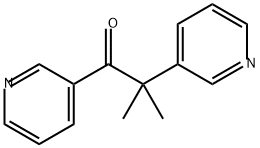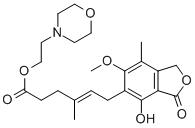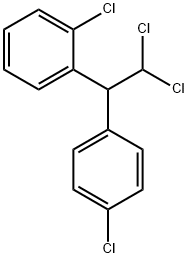A7644258
Metyrapone , 10mMinDMSO , 54-36-4
Synonym(s):
2-Methyl-1,2-di-3-pyridyl-1-propanone;Metyrapone;Su-4885
CAS NO.:54-36-4
Empirical Formula: C14H14N2O
Molecular Weight: 226.27
MDL number: MFCD00006397
EINECS: 200-206-2
| Pack Size | Price | Stock | Quantity |
| 1ml | RMB159.20 | In Stock |
|
| others | Enquire |
Update time: 2022-07-08
PRODUCT Properties
| Melting point: | 52-55 °C(lit.) |
| Boiling point: | 367.89°C (rough estimate) |
| Density | 1.0852 (rough estimate) |
| refractive index | 1.6419 (estimate) |
| Flash point: | >230 °F |
| storage temp. | Inert atmosphere,Room Temperature |
| solubility | H2O: soluble (sparingly) |
| form | solid |
| pka | 4.61±0.10(Predicted) |
| color | White |
| Merck | 13,6181 |
| BRN | 163023 |
| Stability: | Stable for 2 years from date of purchase as supplied. Solutions in DMSO or ethanol may be stored at -20°C for up to 2 months. |
| InChI | InChI=1S/C14H14N2O/c1-14(2,12-6-4-8-16-10-12)13(17)11-5-3-7-15-9-11/h3-10H,1-2H3 |
| InChIKey | FJLBFSROUSIWMA-UHFFFAOYSA-N |
| SMILES | C(C1=CC=CN=C1)(=O)C(C)(C1=CC=CN=C1)C |
| EPA Substance Registry System | Metyrapone (54-36-4) |
Description and Uses
Metyrapone (54-36-4) inhibits cytochrome P450-mediated prostaglandin omega hydroxylation. Inhibits steroid 11β-hydroxylase thereby inhibiting cortisol biosynthesis.
Diagnostic aid (pituitary function);steroid 11?-hydroxylase inhibitor
Safety
| Symbol(GHS) |  GHS07 |
| Signal word | Warning |
| Hazard statements | H302-H315-H319-H335 |
| Precautionary statements | P261-P264-P270-P301+P312-P302+P352-P305+P351+P338 |
| Hazard Codes | Xn |
| Risk Statements | 22-36/37/38 |
| Safety Statements | 26 |
| WGK Germany | 3 |
| RTECS | UC3050000 |
| HS Code | 2933399090 |
| Hazardous Substances Data | 54-36-4(Hazardous Substances Data) |
| Toxicity | A well-known inhibitor of monooxygenase reactions and can also, under some circumstances, stimulate metabolism of xenobiotics in vitro. In either case, the effect is non-competitive, in that the KM does not change whereas Vmax does, decreasing in the case of inhibition and increasing in the case of stimulation. |




